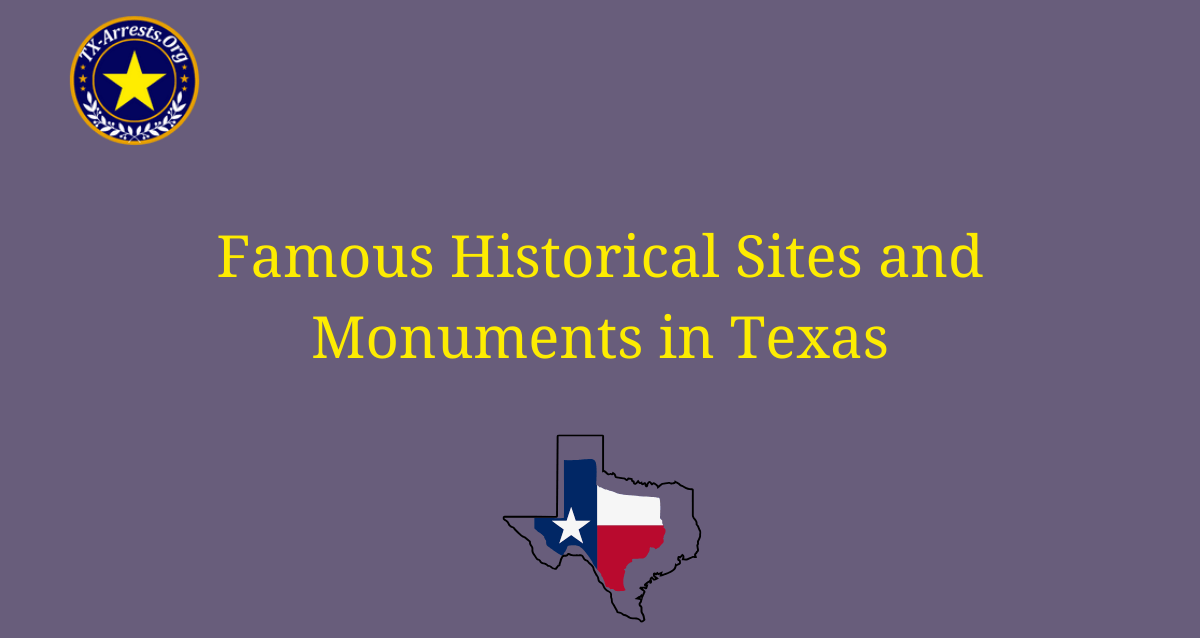Famous Historical Sites and Monuments in Texas

Texas is home to a plethora of famous historical sites and monuments that attract visitors from all over the world. From the iconic Alamo in San Antonio to the stunning San Jacinto Monument in Houston, the state is rich in history and culture. These sites offer a glimpse into Texas’ past and serve as reminders of the events that have shaped the state’s identity.
One of the most well-known historical sites in Texas is the Alamo. Located in the heart of downtown San Antonio, the Alamo is a symbol of Texan independence and resilience. This former mission turned fortress was the site of the Battle of the Alamo in 1836, where a small group of Texan rebels fought against the Mexican army. Despite being outnumbered, the Texans held their ground for 13 days before ultimately being defeated. Today, the Alamo stands as a testament to the bravery and sacrifice of those who fought for Texas’ independence.
The Iconic San Jacinto Monument
The San Jacinto Monument, located in Houston, is a towering symbol of Texas’ victory in the Battle of San Jacinto. Standing at an impressive 567 feet, it is the tallest masonry column in the world and serves as a tribute to the Texans who fought for their independence. The monument commemorates the decisive battle that took place on April 21, 1836, where Texan forces led by General Sam Houston defeated the Mexican army under General Antonio López de Santa Anna. This victory secured Texas’ independence from Mexico and paved the way for the creation of the Republic of Texas.
A Glimpse into Texas’ Past
Texas is home to a diverse range of historical sites that offer a unique glimpse into the state’s past. From Spanish colonial missions to frontier forts, each site has its own story to tell. These historical landmarks serve as reminders of the events and people that have shaped Texas’ identity.
Rich in History and Culture
With its rich history and vibrant culture, Texas has become a popular destination for history enthusiasts and tourists alike. The state’s historical sites and monuments not only provide educational value but also showcase the unique blend of cultures that have influenced Texas over the years.
Preserving Texas’ Heritage
The preservation of Texas’ historical sites is of utmost importance. These sites not only serve as reminders of the past but also contribute to the state’s tourism industry. By maintaining and protecting these landmarks, Texas ensures that future generations can continue to appreciate and learn from its rich history.
The Alamo: A Symbol of Texan Independence
No discussion of Texas’ historical sites would be complete without mentioning the Alamo. Located in downtown San Antonio, the Alamo is a cherished symbol of Texan independence and resilience. Originally a Spanish mission, the Alamo gained fame during the Texas Revolution when a small group of Texan rebels made their last stand against the Mexican army. Though they were ultimately defeated, their bravery and sacrifice inspired future Texans in their fight for freedom.
A Tribute to Bravery and Sacrifice
Each historical site in Texas tells a unique story of bravery and sacrifice. From the Alamo to the San Jacinto Monument, these landmarks stand as tributes to the men and women who fought for Texas’ independence. They serve as reminders of the struggles and triumphs that have shaped the state’s identity and continue to inspire Texans today.
FAQs
What are some famous historical sites and monuments in Texas?
Texas is home to several famous historical sites and monuments. Some of the notable ones include The Alamo in San Antonio, which played a significant role in the Texas Revolution. Another iconic site is the San Jacinto Monument in Houston, commemorating the Battle of San Jacinto. The State Capitol in Austin is also a must-visit, showcasing the state’s political history. The Sixth Floor Museum at Dealey Plaza in Dallas is dedicated to the assassination of President John F. Kennedy. These are just a few examples, Texas boasts a rich history with numerous captivating sites and monuments.
What is the significance of The Alamo?
The Alamo holds great historical significance as it was the site of the Battle of the Alamo in 1836, a pivotal event during the Texas Revolution. It was here that a small group of Texan soldiers, including Davy Crockett and Jim Bowie, fought against the Mexican army in a courageous stand. Although the Texans ultimately lost the battle, it became a symbol of their determination and struggle for independence. Today, The Alamo is a popular tourist attraction and a symbol of Texas history.
Why is the San Jacinto Monument important?
The San Jacinto Monument is an important historical landmark in Texas as it commemorates the Battle of San Jacinto, which took place on April 21, 1836. This battle was a decisive victory for the Texan army led by General Sam Houston, resulting in the independence of Texas from Mexico. The monument stands at a towering height, symbolizing the triumph and significance of the battle. It also houses a museum that provides a comprehensive overview of the events leading up to and following the battle.
What can I expect to see at the State Capitol in Austin?
The State Capitol in Austin is an impressive building that serves as the seat of government for the state of Texas. Visitors can explore the magnificent architecture of the capitol, including its iconic dome. Inside, there are various exhibits and displays that highlight the history and significance of Texas. Guided tours are available, allowing visitors to learn about the state’s government processes and the notable figures who have served there. The capitol grounds also feature beautiful gardens and monuments, making it a pleasant place to stroll and soak in the history.
What is the Sixth Floor Museum at Dealey Plaza about?
The Sixth Floor Museum at Dealey Plaza in Dallas is dedicated to the life, death, and legacy of President John F. Kennedy. Located in the former Texas School Book Depository building, it offers a comprehensive look at the events leading up to the assassination of President Kennedy on November 22, 1963. The museum features exhibits, photographs, films, and artifacts that provide a detailed account of that fateful day and its aftermath. It also explores the cultural and historical impact of the event, making it a significant attraction for history enthusiasts.
Are there any other notable historical sites and monuments in Texas?
Absolutely! In addition to the aforementioned sites, Texas is home to many other remarkable historical landmarks. Some notable ones include the Mission San José in San Antonio, which is part of the San Antonio Missions National Historical Park and showcases the state’s Spanish colonial heritage. The USS Lexington Museum on the Bay in Corpus Christi offers a fascinating look at the history of naval aviation. The Lyndon B. Johnson National Historical Park in Stonewall provides insights into the life and presidency of President Lyndon B. Johnson. These are just a few examples, Texas has a wealth of historical sites and monuments waiting to be discovered.






